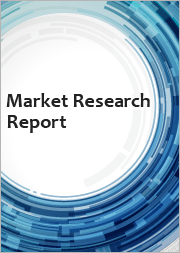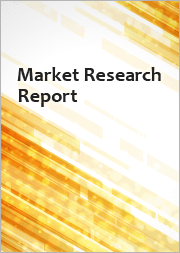
|
시장보고서
상품코드
1483113
세계의 행동인터넷(IoB) 시장(2024-2031년)Global Internet of Behavior Market 2024-2031 |
||||||
행동인터넷 시장은 예측 기간(2024-2031년) 동안 연평균 23.2%의 높은 성장률을 보일 것으로 예상됩니다. 행동인터넷(IoB)은 인간의 행동을 이해하고 영향을 미치기 위해 여러 소스에서 데이터를 수집하고 분석하는 것을 중심으로 하는 개념입니다. 이 기술은 빅데이터 분석, 인공지능, 사물인터넷(IoT)을 통합하여 웨어러블, 소셜 미디어, 보안 시스템 등 다양한 디지털 접점에서 데이터를 수집합니다.
시장 역학
다양한 산업 분야에서 분석 도구에 대한 수요 증가
분석 기술은 많은 디지털 광고 회사들이 일상적인 소비자 행동에 대해 더 많이 알기 위해 사용하고 있으며, IoB는 마케팅 담당자가 플랫폼 전반에서 고객의 구매 패턴을 추적하고, 이전에는 접근할 수 없었던 데이터를 수집하고, 밸류체인을 재구성하고, 진실성 있는 POS 알림과 개인화된 광고를 제공하는 데 사용할 수 있습니다. IoB는 COVID-19 팬데믹으로 인해 확산되어 소비자와 브랜드가 관계를 맺는 방식을 바꾸고, 기업이 고객 지원 전략을 재평가하게 만들었습니다. IoB의 개념은 인간 심리의 관점에서 데이터를 정확하게 분석하고, 그 이해를 바탕으로 새로운 제품 개발과 마케팅에 활용하는 것을 목표로 하고 있습니다.
시장 수요를 파악하는 데 도움이 되는 IoB
IoB의 개념은 인간 심리의 관점에서 데이터를 정확하게 분석하고, 그 이해를 통해 새로운 상품 창출과 판매에 도움을 주는 것을 목적으로 하며, IoB는 사용자의 인터넷 행동에서 수집한 데이터에 행동심리학을 적용하고자 하는 것입니다. 데이터 분석에 인간 심리를 활용해 새로운 상품 창출과 판매 촉진에 활용하자는 것입니다. 이 새로운 전략이 양질의 인프라에 미치는 영향은 다양한 기업 간의 연결이 강화될 수 있다는 점입니다.
시장 세분화
당사의 세계 행동인터넷 시장 상세 분석은 조직 규모, 용도, 산업별로 다음과 같이 구분할 수 있습니다.
- 조직 규모에 따라 시장은 대기업과 중소기업으로 세분화됩니다.
- 용도별로는 광고 캠페인, 디지털 마케팅, 컨텐츠 배포, 브랜드 홍보로 세분화됩니다.
- 산업별로는 BFSI, 미디어 및 엔터테인먼트, 관광 및 여행, IT 및 통신, 소매 및 E-Commerce, 헬스케어, 제조, 기타로 세분화됩니다.
조직 규모가 가장 큰 부문이 될 것으로 예상
중소기업(SMEs) 부문이 주요 시장 점유율을 차지하고 있습니다. 이러한 성장은 디지털화와 스마트 제조의 결과로 이들 기업에서 IoT 기기 사용이 증가하고 있기 때문입니다. 중소기업은 성장과 발전을 위한 계획에 자주 착수하기 때문에 효과적인 구현 방법을 구축하기 위해 IoT를 채택할 것으로 예상됩니다.
대기업의 경우, 프로젝트 의사결정을 위해 분석해야 하는 대량의 데이터를 생산하고 있기 때문입니다. 대기업은 사용자의 노트북 기기, 휴대폰, 음성 비서 데이터 등 다양한 데이터 입력 모드를 가지고 있기 때문에 이러한 조직에서 IoB의 활용이 증가할 것으로 예상됩니다. 또한, 사용자의 행동에 따라 실시간으로 데이터를 알려주고 실시간 기능을 제공하는 추세는 대기업의 IoB 활용을 촉진할 것으로 예상됩니다.
BFSI 하위 부문이 큰 시장 점유율을 차지
IoB 분야의 시장 점유율로 볼 때, 주요 카테고리는 BFSI(은행, 금융 서비스, 보험)입니다. 이는 BFSI 부문이 위험 관리, 맞춤형 금융 서비스, 의사 결정을 위해 고객 데이터에 크게 의존하는 등 많은 산업별 변수에 의해 설명됩니다. 이 분야의 기업들은 거래 내역, 온라인 상호 작용, 소셜 미디어에서의 감정 등 다양한 소스에서 방대한 양의 행동 데이터를 수집하고 분석할 수 있습니다. 이러한 인사이트는 BFSI 조직이 부정행위를 식별하고, 고객 경험을 개선하고, 상품 제안을 맞춤화하는 데 도움이 될 수 있습니다. 또한, 인공지능 기반 챗봇과 가상 비서의 결합은 고객 참여를 높이고 문의를 신속하게 해결할 수 있도록 돕습니다.
지역별 전망
세계 행동인터넷 시장은 북미(미국, 캐나다), 유럽(영국, 이탈리아, 스페인, 독일, 프랑스, 기타 유럽), 아시아태평양(인도, 중국, 일본, 한국, 기타 아시아태평양), 기타 지역(중동 및 아프리카, 라틴아메리카)으로 나뉩니다.
행동인터넷 세계 시장 성장: 지역별 2024-2031년
북미가 주요 시장 점유율을 차지
북미는 IT 및 통신 기업에서 중요한 위치를 차지하고 있으며, 현대 기술의 급속한 도입과 기술 발전 추세는 IoB 수요를 촉진할 것으로 예상됩니다. 이와 마찬가지로, 기업들은 속도, 엔진 스트레스, 주행거리 등을 포함한 촉진요인 데이터를 수집할 수 있으며, 이는 북미의 확대되는 자동차 분야에서의 수요를 촉진할 것으로 예상됩니다. 자동차 제조업체들은 이러한 행동 데이터를 활용하여 소비자의 욕구를 충족시키는 자동차를 설계할 것으로 예상됩니다.
북미가 기술적으로 앞선 것은 커넥티드 디바이스의 높은 보급률, 유비쿼터스 인터넷 커버리지, 디지털 플랫폼의 보급 등 다양한 변수의 결과입니다. 이에 따라 다양한 소스에서 방대한 양의 행동 데이터를 수집할 수 있게 되었습니다. 또한, 북미의 IoT, 빅데이터 분석, 인공지능(AI) 산업은 업계 리더, 연구기관, 기술 공급업체로 구성된 발전된 생태계가 주도하고 있습니다. 또한, 이 지역에는 소비자 데이터 기반 마케팅 및 개인화 문화가 뿌리 깊게 자리 잡고 있어 IoT 솔루션에 대한 수요도 높습니다.
세계 행동인터넷 시장에 진출한 주요 기업으로는 Aware Inc., Mastercard International Inc, OpenText Corp, Alteryx Inc, NICE Ltd., Koch Industries Inc. 등이 있습니다. 시장 경쟁력을 유지하기 위해 각 업체들은 제휴, 합병, 인수 등의 전략을 통해 사업 확장 및 제품 개발에 점점 더 많은 노력을 기울이고 있습니다.
목차
제1장 보고서 개요
- 업계 현황 분석과 성장 가능성 전망
- 조사 방법과 툴
- 시장 내역
- 부문별
- 지역별
제2장 시장 개요와 인사이트
- 조사 범위
- 애널리스트의 인사이트와 현재 시장 동향
- 주요 조사 결과
- 추천사항
- 결론
제3장 경쟁 상황
- 주요 기업 분석
- Aware Inc.
- Mastercard International Inc.
- OpenText Corp
- 주요 전략 분석
제4장 시장 세분화
- 세계의 행동인터넷 시장 : 조직 규모별
- 대기업
- 중소기업
- 행동인터넷 세계 시장 : 용도별
- 광고 캠페인
- 디지털 마케팅
- 컨텐츠 전송
- 브랜드 프로모션
- 세계의 행동인터넷 시장 : 산업별
- BFSI
- 미디어·엔터테인먼트
- 관광·여행
- IT·통신
- 소매·E-Commerce
- 헬스케어
- 제조업
- 기타
제5장 지역 분석
- 북미
- 미국
- 캐나다
- 유럽
- 영국
- 독일
- 이탈리아
- 스페인
- 프랑스
- 기타 유럽
- 아시아태평양
- 중국
- 인도
- 일본
- 한국
- 기타 아시아태평양
- 세계 기타 지역
- 라틴아메리카
- 중동 및 아프리카
제6장 기업 개요
- Abengoa, S.A.
- Alteryx Inc.
- NICE Ltd.
- Riverbed Technology LLC
- Koch Industries Inc.
- Coveo Solutions Inc.
- Cognitive Scale Inc.
- Capillary Technologies
- Sweet Analytics Ltd.
- Mazu Networks Inc.
- Traceable
Internet of Behavior Market Size, Share & Trends Analysis Report by Organization Size (Large Enterprises and Small and Medium Enterprises), by Application (Advertising Campaign, Digital Marketing, Content Delivery and Brand Promotion), and by Industry (BFSI, Media and Entertainment, Tourism & Travel, IT & Telecom, Retail & E-Commerce, Healthcare, Manufacturing and Others) Forecast Period (2024-2031)
Internet of behavior market is anticipated to grow at a significant CAGR of 23.2% during the forecast period (2024-2031). The internet of behaviors, or IoB, is an idea that centers on gathering and analyzing data from several sources in order to comprehend and impact human behavior. The technology integrates big data analytics, artificial intelligence, and the internet of things (IoT) to collect data from various digital touchpoints such as wearables, social media, and security systems.
Market Dynamics
Growing demand for analytical tools in different industries
Analytics technologies are being used by a number of digital advertising companies to learn more about their regular consumer behavior. The IoB can be used by marketers to track customer buying patterns across platforms, obtain data that was previously inaccessible, reorganize the value chain, and even provide truthful point-of-sale alerts and personalized advertising. IoB has become popular in the large part of COVID-19 pandemic, which has changed the way consumers interact with brands and made companies reevaluate their customer outreach strategies. The IoB concept aims to precisely analyze data from the perspective of human psychology and use that understanding to create and market new products.
IoB to help in understanding market demand
The IoB concept aims to precisely analyze data from the perspective of human psychology and use that understanding to create and market new products. The IoB makes an effort to apply behavioral psychology to data collected from users' internet activities. It aims to provide answers to queries concerning the use of human psychology in data analysis and the creation and promotion of new goods. Occasional effects of this new strategy on quality infrastructure include the possibility of increased connectivity among various businesses.
Market Segmentation
Our in-depth analysis of the global internet of behavior market includes the following segments by organization size, application, and industry:
- Based on organization size, the market is sub-segmented into large enterprises and small and medium enterprises.
- Based on application, the market is sub-segmented into advertising campaign, digital marketing, content delivery and brand promotion.
- Based on industry, the market is sub-segmented into bfsi, media and entertainment, tourism & travel, IT & telecom, retail & e-commerce, healthcare, manufacturing and others.
Organization Size is Projected to Emerge as the Largest Segment
The small and medium-sized business (SMEs) sector held the major market share. The growth can be attributed to these businesses' increasing IoT device usage as a result of digitalization and smart manufacturing. As SMEs frequently embark on plans for growth and development, it is anticipated that they would employ IoB to create effective implementation methods.
Large enterprises attributed to the significant amounts of data produced by major businesses, which need to be analyzed in order to make project decisions. As large firms have many data input modes, including user laptop devices, mobile phones, voice assistant data, and more, it is anticipated that the use of IoB will increase in these organizations. Furthermore, it is projected that the trend of real-time data notifications based on user behavior to provide live features would propel the use of IoB in major corporations.
BFSI Sub-segment to Hold a Considerable Market Share
In terms of market share within the IoB space, the leading category is BFSI (Banking, Financial Services, and Insurance). This is explained by a number of industry-specific variables, including the BFSI sector's heavy reliance on client data for risk management, tailored financial services, and decision-making. Businesses in this industry can collect and analyze enormous volumes of behavioral data from various sources, including transaction histories, online interactions, and social media emotions. These insights help BFSI organizations identify fraudulent activity, improve client experiences, and customize product offers. Furthermore, the amalgamation of artificial intelligence-powered chatbots and virtual assistants amplifies client engagement and facilitates prompt resolution of inquiries.
Regional Outlook
The global internet of behavior market is further segmented based on geography including North America (the US, and Canada), Europe (UK, Italy, Spain, Germany, France, and the Rest of Europe), Asia-Pacific (India, China, Japan, South Korea, and Rest of Asia-Pacific), and the Rest of the World (the Middle East & Africa, and Latin America).
Global Internet of Behavior Market Growth by Region 2024-2031
Source: OMR Analysis
North America Holds Major Market Share
North America has a significant part in IT and telecom enterprises and it is projected that the rapid uptake of contemporary technology and the tendency of technological advancement will fuel demand for IoB. Similar to this, corporations can gather driver data including speed, engine stress, distance traveled, and more, which is predicted to drive demand in North America's expanding vehicle sector. It is anticipated that automakers would use this behavioral data to design cars that cater to consumer desires.
North America is technologically advanced is a result of various variables, such as a high rate of connected device adoption, ubiquitous internet coverage, and widespread use of digital platforms. This makes it possible to gather enormous volumes of behavioral data from numerous sources. Furthermore, the IoT, big data analytics, and artificial intelligence (AI) industries in North America are driven by a developed ecosystem of industry leaders, research institutes, and technology vendors. There is also a considerable need for IoB solutions in the region due to the strong culture of consumer data-driven marketing and personalization.
Market Players Outlook
Note: Major Players Sorted in No Particular Order.
The major companies serving the global internet of behavior market include Aware Inc., Mastercard International Inc., OpenText Corp, Alteryx Inc., NICE Ltd. and Koch Industries Inc., among others. The market players are increasingly focusing on business expansion and product development by applying strategies such as collaborations, mergers, and acquisitions to stay competitive in the market.
The Report Covers:
- Market value data analysis of 2023 and forecast to 2031.
- Annualized market revenues ($ million) for each market segment.
- Country-wise analysis of major geographical regions.
- Key companies operating in the global internet of behavior market. Based on the availability of data, information related to new product launches, and relevant news is also available in the report.
- Analysis of business strategies by identifying the key market segments positioned for strong growth in the future.
- Analysis of market-entry and market expansion strategies.
- Competitive strategies by identifying 'who-stands-where' in the market.
Table of Contents
1.Report Summary
- Current Industry Analysis and Growth Potential Outlook
- 1.1.Research Methods and Tools
- 1.2.Market Breakdown
- 1.2.1.By Segments
- 1.2.2.By Region
2.Market Overview and Insights
- 2.1.Scope of the Report
- 2.2.Analyst Insight & Current Market Trends
- 2.2.1.Key Findings
- 2.2.2.Recommendations
- 2.2.3.Conclusion
3.Competitive Landscape
- 3.1.Key Company Analysis
- 3.2.Aware Inc.
- 3.2.1.Overview
- 3.2.2.Financial Analysis
- 3.2.3.SWOT Analysis
- 3.2.4.Recent Developments
- 3.3.Mastercard International Inc.
- 3.3.1.Overview
- 3.3.2.Financial Analysis
- 3.3.3.SWOT Analysis
- 3.3.4.Recent Developments
- 3.4.OpenText Corp
- 3.4.1.Overview
- 3.4.2.Financial Analysis
- 3.4.3.SWOT Analysis
- 3.4.4.Recent Developments
- 3.5.Key Strategy Analysis
4.Market Segmentation
- 4.1.Global Internet of Behavior Market by Organization Size
- 4.1.1.Large Enterprises
- 4.1.2.Small and Medium Enterprises
- 4.2.Global Internet of Behavior Market by Application
- 4.2.1.Advertising Campaign
- 4.2.2.Digital Marketing
- 4.2.3.Content Delivery
- 4.2.4.Brand Promotion
- 4.3.Global Internet of Behavior Market by Industry
- 4.3.1.BFSI
- 4.3.2.Media and Entertainment
- 4.3.3.Tourism & Travel
- 4.3.4.IT & Telecom
- 4.3.5.Retail & E-Commerce
- 4.3.6.Healthcare
- 4.3.7.Manufacturing
- 4.3.8.Others
5.Regional Analysis
- 5.1.North America
- 5.1.1.United States
- 5.1.2.Canada
- 5.2.Europe
- 5.2.1.UK
- 5.2.2.Germany
- 5.2.3.Italy
- 5.2.4.Spain
- 5.2.5.France
- 5.2.6.Rest of Europe
- 5.3.Asia-Pacific
- 5.3.1.China
- 5.3.2.India
- 5.3.3.Japan
- 5.3.4.South Korea
- 5.3.5.Rest of Asia-Pacific
- 5.4.Rest of the World
- 5.4.1.Latin America
- 5.4.2.The Middle East & Africa
6.Company Profiles
- 6.1.Abengoa, S.A.
- 6.2.Alteryx Inc.
- 6.3.NICE Ltd.
- 6.4.Riverbed Technology LLC
- 6.5.Koch Industries Inc.
- 6.6.Coveo Solutions Inc.
- 6.7.Cognitive Scale Inc.
- 6.8.Capillary Technologies
- 6.9.Sweet Analytics Ltd.
- 6.10.Mazu Networks Inc.
- 6.11.Traceable



















